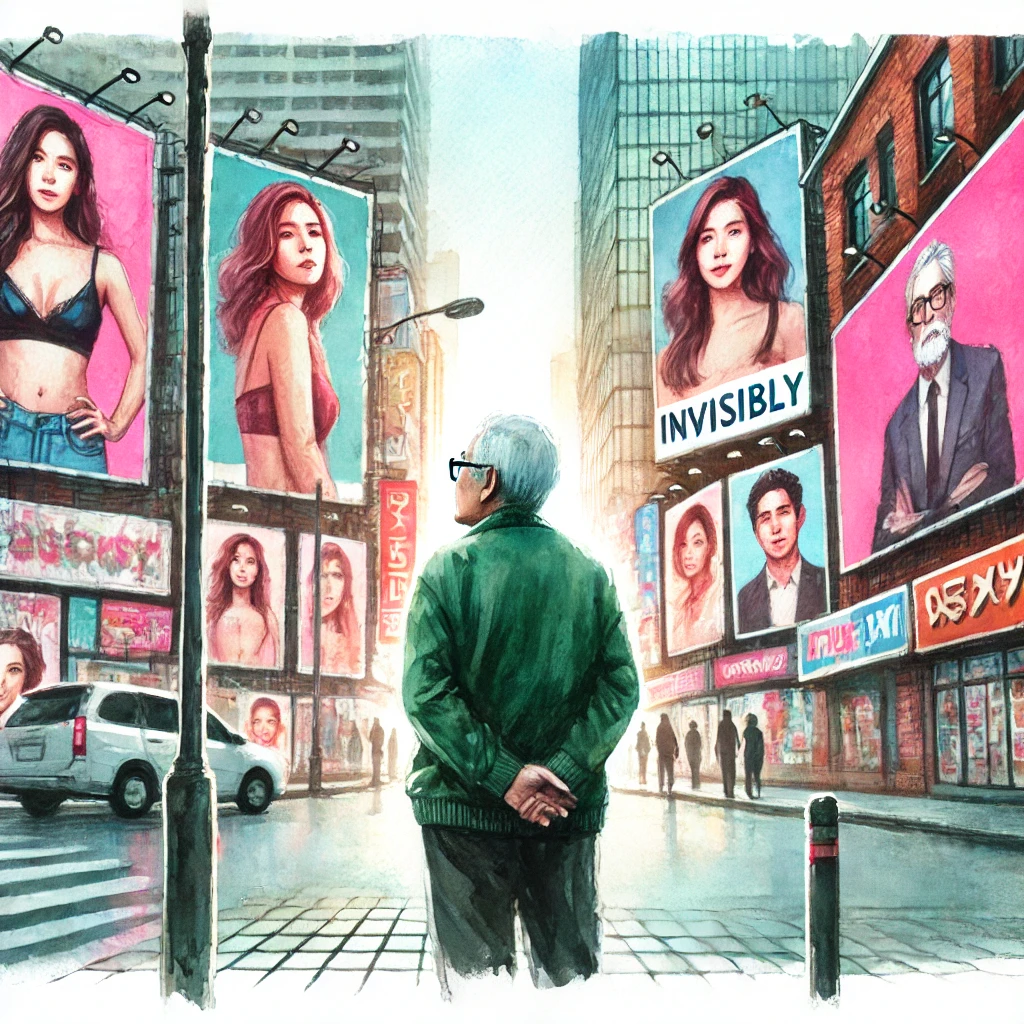Somewhere around the age of 50, you might notice a peculiar shift in how the world communicates with you. Advertising, once an intimate dialogue speaking directly to your desires, needs, and aspirations, seems to turn its gaze away. Youthful models grace the billboards, slogans celebrate vitality and newness, and the products marketed no longer feel relevant. This change is not only about marketing trends but can profoundly affect one’s sense of self and belonging.
This article explores the psychological and social impacts of advertising’s age bias and what it means for our self-perception as we age.
Advertising and the Pursuit of Youth
Modern advertising has long been synonymous with idealised versions of youth. From skincare promising eternal smoothness to fashion trends designed for bodies in their prime, the media perpetuates a narrow definition of beauty and worth. This creates an “aspirational gap,” where older individuals are either excluded or depicted in ways that reinforce stereotypes—such as frailty, irrelevance, or an overly nostalgic view of life.
The Impact on the Self
- Erosion of Identity
The lack of representation in advertising can lead to feelings of invisibility. Self-identity, which is partly constructed by societal feedback, may falter when the messages once affirming one’s value fade. This can lead to internalised ageism, where individuals unconsciously adopt negative beliefs about their own ageing. -
Loss of Aspirational Narratives
Without narratives that reflect the joys, strengths, and aspirations of older adults, there is a cultural void. People may struggle to visualise fulfilling futures, leading to stagnation in personal growth and creativity. -
Consumer Alienation
Many older adults report feeling ignored by industries that focus on younger demographics. This reinforces a sense of societal detachment and may even limit their willingness to engage with new products, services, or technologies.
Ageing as an Opportunity for Reclaiming the Self
Though often overlooked, ageing presents an opportunity for redefining the self outside societal expectations. Some strategies include:
- Challenging Age Norms: Seek out and support brands that champion age diversity in their campaigns.
- Authentic Self-Exploration: Without the external validation of advertising, individuals can focus on intrinsic values and goals.
- Community Connection: Engage in communities that celebrate ageing, sharing stories, and building networks of support.
Case Study: Embracing Representation in Later Life
Consider the success of brands like Dove, which introduced campaigns featuring older models in a bid to celebrate real beauty. Such initiatives can serve as a reminder that visibility matters and help restore a sense of identity and pride in ageing.
Conclusion
One conclusion is that as society continues to grapple with ageing populations, the advertising industry must evolve to include older individuals as part of its narrative. Until then, recognising the impact of age bias and actively reclaiming the self can be a powerful way to counteract invisibility. Ageing, after all, is not a diminishment but a transition into a new chapter of life, full of untapped potential and wisdom.
Another conclusion is that it is fun to be ignored by advertising. I have enough skill and wisdom to choose what I want. I also see behind the messages to the harm that is promoted (especially by many big-brand food manufacturers). To this end, I revel in shopping in charity shops (where the range is better, anyway). I avoid advertising messages. I enjoy home cooked food. What is your take?
